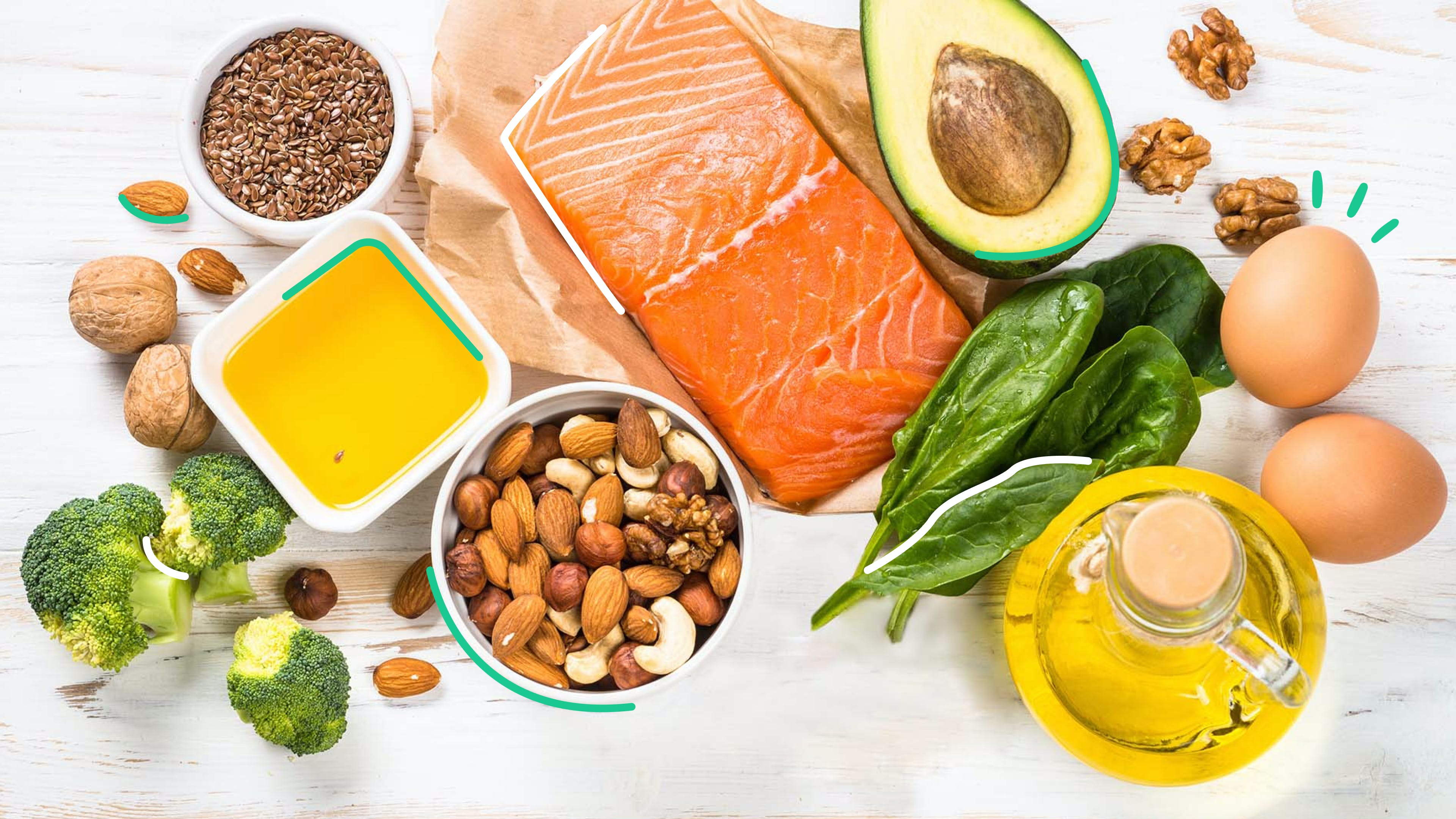Contents
How Does Ketosis Work?
Ketosis is a metabolic state in which the body relies on ketones, a byproduct of fat breakdown, as its primary source of energy instead of glucose. When carbohydrates are restricted in the diet, the body starts to burn stored fat for fuel, leading to the production of ketones. These ketones are then used by the brain, muscles, and other organs to perform their functions. This shift in energy metabolism can have several benefits, including weight loss, improved mental clarity, and increased energy levels. However, it is important to note that achieving and maintaining ketosis requires careful planning and adherence to a low-carbohydrate, high-fat diet.
Getting Started with the Keto Diet
Understanding Macronutrients
Understanding macronutrients is essential when following a ketogenic diet. Macronutrients are the three major dietary components: carbohydrates, proteins, and fats. In order to achieve ketosis, it is important to understand how these macronutrients affect our body’s energy production and metabolism. Carbohydrates are typically limited on a ketogenic diet, as they are the main source of glucose, which the body uses for energy. Instead, the focus is on consuming high amounts of healthy fats and an adequate amount of protein. By understanding the role of macronutrients in the ketogenic diet, individuals can make informed choices about their food intake and optimize their chances of reaching and maintaining ketosis.
Calculating Your Macros
Calculating your macros is an essential step in following a keto diet. When we eat food, we get different kinds of nutrients that our body needs. The most important ones are called macros, which is short for macronutrients. There are three types of macros: carbs, proteins, and fats. By calculating and tracking your macros, you can ensure that you are consuming the right amount of each nutrient to achieve and maintain ketosis. To calculate your macros, you need to determine your daily calorie intake and then allocate a specific percentage of calories to each macronutrient. This personalized approach allows you to tailor your diet to your specific needs and goals, whether it’s weight loss, improved energy levels, or better athletic performance. Additionally, tracking your macros can help you identify any imbalances in your diet and make necessary adjustments to optimize your results. Remember, accurate macro calculations are crucial for a successful keto journey, so take the time to calculate and monitor your macros regularly.
Creating a Meal Plan
Creating a meal plan is an essential step in successfully following the Sure Keto diet. It allows you to have a clear structure and organization when it comes to your meals, ensuring that you are consuming the right balance of macronutrients while staying within your daily calorie goals. When creating a meal plan for Sure Keto, it is important to focus on high-quality, low-carb foods such as lean proteins, healthy fats, and non-starchy vegetables. By carefully planning your meals and snacks, you can ensure that you have a variety of delicious and nutritious options to enjoy while on the Sure Keto journey.
Foods to Eat on the Keto Diet
Healthy Fats
In the world of keto, healthy fats are the key to success. These fats not only provide a rich source of energy, but they also help to keep you feeling satisfied and full. Avocados, nuts, and olive oil are just a few examples of the healthy fats that can be incorporated into a ketogenic diet. These fats are not only delicious, but they also offer a variety of health benefits, including improved heart health and reduced inflammation. So, when it comes to achieving ketosis, don’t be afraid to embrace the power of healthy fats!
Low-Carb Vegetables
A keto diet requires eating low-carb vegetables as an important part of your meals. These vegetables are high in fiber and low in carbohydrates, making them perfect for maintaining ketosis. Some examples of low-carb vegetables include broccoli, cauliflower, spinach, kale, and zucchini. These vegetables not only provide essential nutrients but also add variety and flavor to your meals. Incorporating a variety of low-carb vegetables into your diet can help you meet your daily nutrient needs while staying in ketosis.
Protein Sources
Protein is an essential macronutrient in the ketogenic diet, as it helps to build and repair tissues, supports muscle growth, and aids in the production of enzymes and hormones. When following the Sure Keto diet, it is important to choose high-quality protein sources that are low in carbohydrates. Some excellent protein sources for those on the ketogenic diet include lean meats such as chicken, turkey, and beef, fatty fish like salmon and sardines, eggs, dairy products like Greek yogurt and cottage cheese, and plant-based options like tofu and tempeh. These protein sources not only provide the necessary amino acids but also contain essential vitamins and minerals that contribute to overall health and well-being.
Foods to Avoid on the Keto Diet
Sugar and Sweeteners
In the world of keto, sugar and sweeteners are often seen as the enemy. This is because sugar and high-carb sweeteners can quickly kick you out of ketosis, the metabolic state where your body burns fat for fuel instead of carbohydrates. While it can be challenging to completely eliminate sugar from your diet, there are alternative sweeteners that are keto-friendly. These include stevia, erythritol, and monk fruit, which provide sweetness without the negative impact on blood sugar levels. It’s important to note that moderation is key, as even keto-friendly sweeteners can still trigger cravings and affect insulin response. When it comes to sweetening your keto-friendly treats, it’s best to experiment and find the sweeteners that work best for you while still keeping you in ketosis.
Grains and Starches
Grains and starches are typically high in carbohydrates, making them a challenge for those following a ketogenic diet. These foods, including wheat, rice, oats, and corn, can quickly raise blood sugar levels and prevent the body from entering a state of ketosis. Instead, individuals on a keto diet focus on consuming low-carb alternatives such as cauliflower rice, almond flour, and coconut flour. By eliminating grains and starches, individuals can effectively reduce their carbohydrate intake and increase their chances of achieving ketosis.
Processed Foods
Processed foods are widely available in today’s modern society. These foods have undergone various methods of preservation, such as canning, freezing, or drying, to extend their shelf life. While they may be convenient and easily accessible, processed foods are often high in added sugars, unhealthy fats, and artificial ingredients. Consuming a diet rich in processed foods has been linked to various health issues, including obesity, heart disease, and diabetes. It is important to limit the intake of processed foods and focus on consuming whole, unprocessed foods to maintain a healthy lifestyle.
Tips for Achieving and Maintaining Ketosis
Tracking Your Macros
Tracking your macros is an essential aspect of the ketogenic diet. By keeping track of your macronutrient intake, you can ensure that you are consuming the right balance of fats, proteins, and carbohydrates to achieve and maintain ketosis. One of the key metrics to monitor is your daily carbohydrate intake, as this directly impacts your body’s ability to enter ketosis. Additionally, tracking your protein intake is important to prevent muscle loss and maintain a healthy metabolism. Finally, monitoring your fat intake is crucial as it provides the majority of your daily calorie intake and is essential for fueling your body in the absence of carbohydrates. By diligently tracking your macros, you can optimize your ketogenic journey and achieve your desired health and weight loss goals.
Staying Hydrated
Drinking lots of water is a vital part of a ketogenic diet, as it helps your body function well. Ketosis can cause increased water loss through urine, which can lead to dehydration if not properly managed. It is recommended to drink plenty of water throughout the day to maintain optimal hydration levels. Additionally, consuming electrolytes such as sodium, potassium, and magnesium can help replenish the minerals lost during ketosis. Adequate hydration not only supports overall health but also aids in digestion, promotes detoxification, and helps regulate body temperature. Therefore, make sure to prioritize staying hydrated while on the Sure Keto journey to maximize the benefits of ketosis.
Incorporating Exercise
Incorporating exercise is an essential component of a successful ketogenic lifestyle. Regular physical activity not only helps to burn calories and promote weight loss, but it also plays a crucial role in maintaining overall health and well-being. When following a ketogenic diet, engaging in moderate-intensity exercises such as walking, cycling, or swimming can help to enhance the fat-burning effects of ketosis. Additionally, incorporating strength training exercises can help to build and maintain lean muscle mass, which is important for boosting metabolism and improving body composition. It is important to listen to your body and choose exercises that you enjoy and are sustainable in the long term. Remember to stay hydrated, fuel your body with appropriate pre and post-workout nutrition, and consult with a healthcare professional before starting any new exercise program.
Common Challenges and How to Overcome Them
Keto Flu
The Keto Flu is a common side effect experienced by some individuals when they first start the ketogenic diet. It is characterized by symptoms such as fatigue, headaches, nausea, dizziness, and irritability. These symptoms occur as the body adjusts to the low-carb, high-fat diet and transitions into a state of ketosis. The Keto Flu typically lasts for a few days to a week, but can be managed by staying hydrated, getting enough electrolytes, and gradually increasing fat intake. It is important to remember that not everyone will experience the Keto Flu, and if they do, the symptoms are temporary and will subside as the body becomes fully adapted to ketosis.
Social Situations
In social situations, following a keto diet can sometimes be challenging. Many social gatherings and events revolve around food that is not keto-friendly, such as carb-heavy dishes and sugary desserts. It can be difficult to resist temptation and stick to your keto goals. However, with a little planning and preparation, you can navigate these social situations successfully. One strategy is to bring your own keto-friendly dish or snack to share, ensuring that you have something delicious and compliant to enjoy. Additionally, communicating your dietary needs to your friends and family can help them understand and support your choices. Remember to focus on the social aspect of the gathering rather than just the food, and enjoy the company of your loved ones while staying true to your keto lifestyle.
Traveling on Keto
Traveling on a keto diet can be challenging, but with some planning and preparation, it is definitely possible to maintain your ketosis while on the go. One important aspect to consider is packing keto-friendly snacks and meals for the journey. This will ensure that you have healthy options readily available and avoid succumbing to the temptation of high-carb foods. Additionally, researching keto-friendly restaurants or food options at your travel destination can help you make informed choices when dining out. It is also essential to stay hydrated and carry water with you at all times. Lastly, don’t forget to listen to your body and adjust your meals and macros as needed. By following these tips, you can enjoy your travels while staying on track with your keto lifestyle.
Next Steps Now that you have a solid understanding of the ketogenic diet and how to achieve ketosis, it’s time to take the next steps towards transforming your health and well-being. SimpliACV Keto is here to support you on your journey. Our premium apple cider vinegar supplement is specially formulated to enhance the effects of ketosis, helping you reach your weight loss goals faster and more efficiently. With its powerful blend of natural ingredients, SimpliACV Keto can provide you with increased energy, improved digestion, and reduced cravings. Don’t wait any longer to experience the incredible benefits of ketosis. Take action now and visit https://simpliacvketo.com/ to order your bottle of SimpliACV Keto today!

